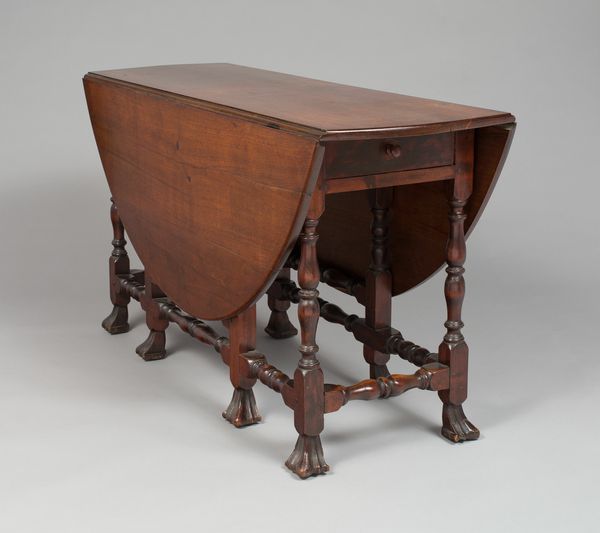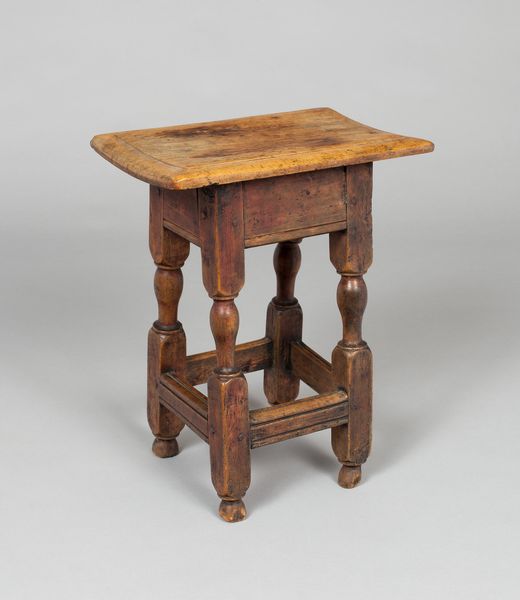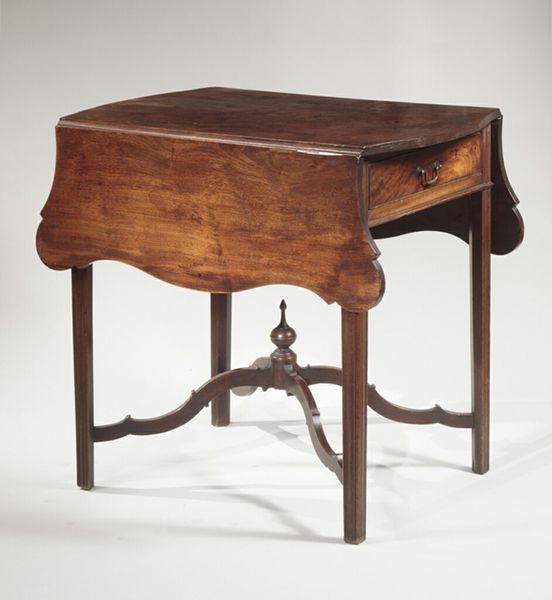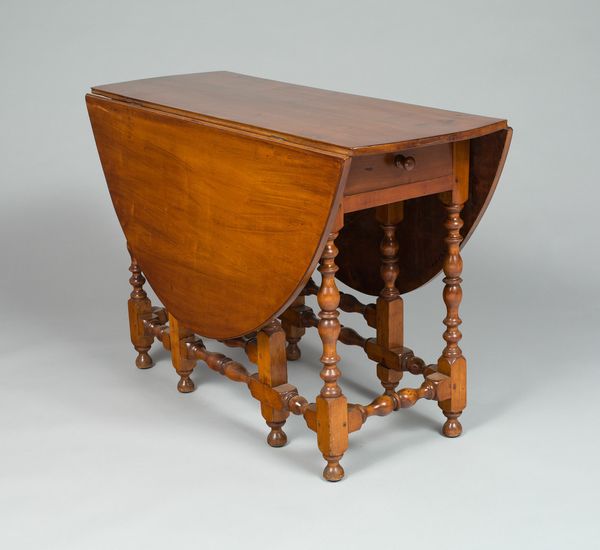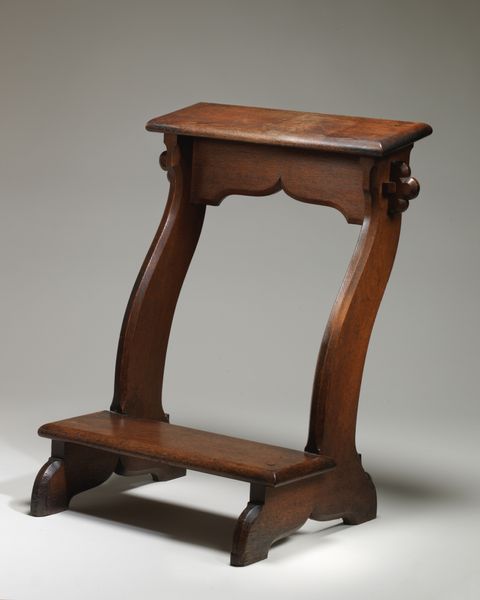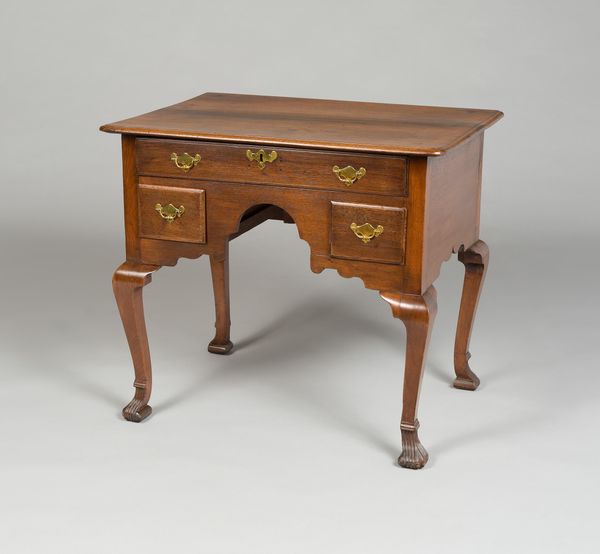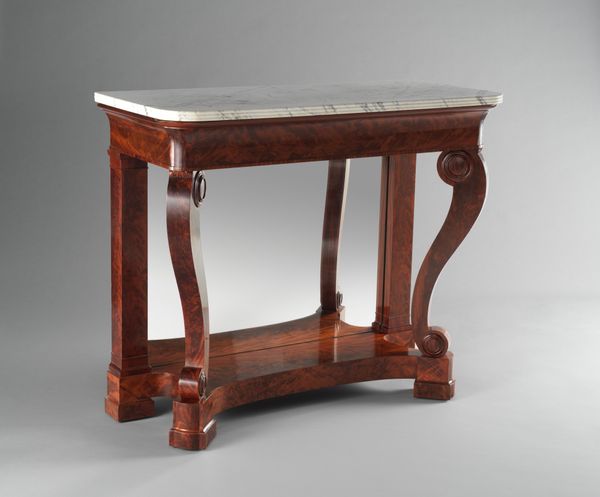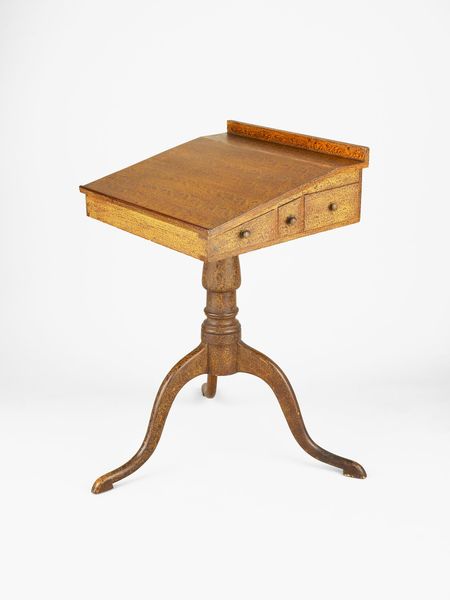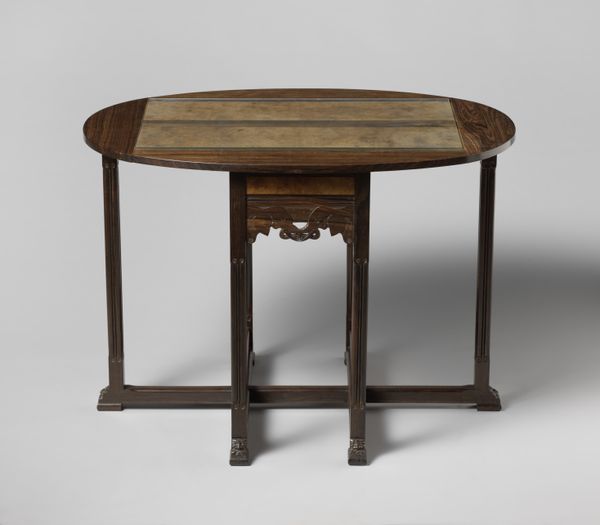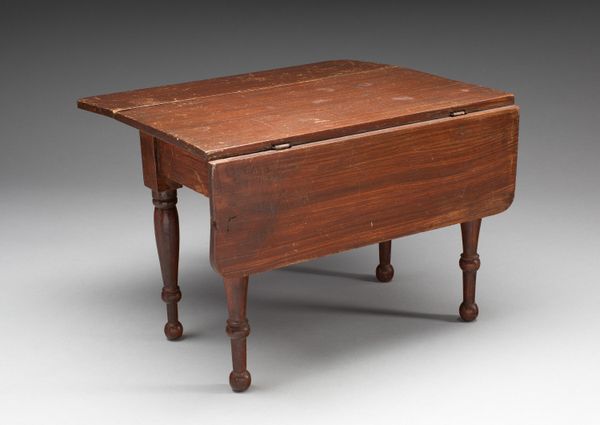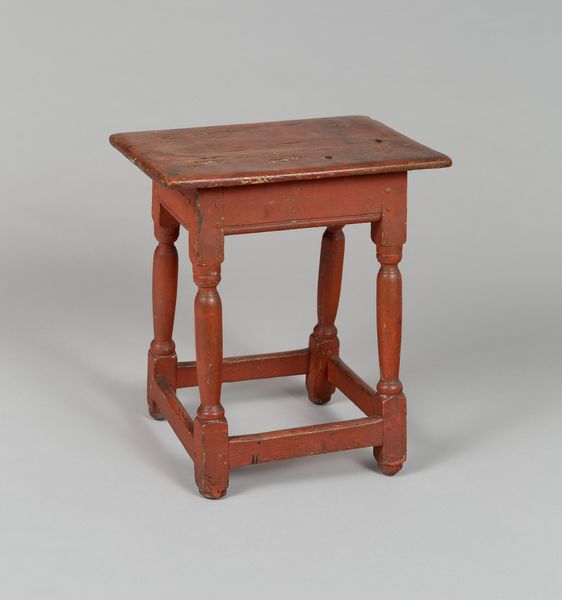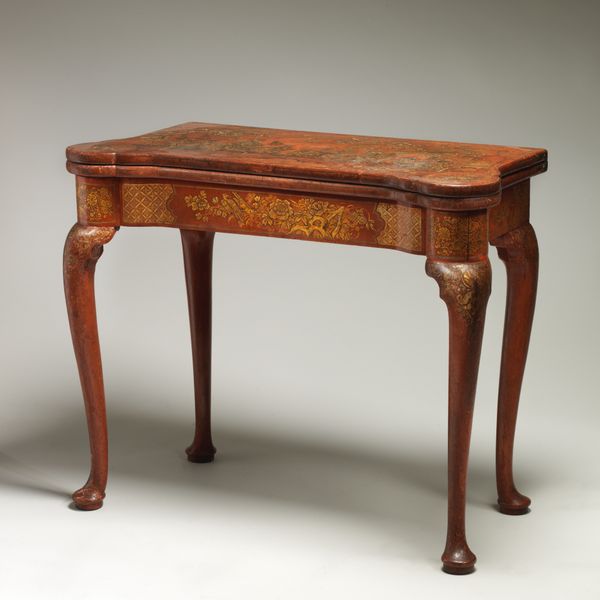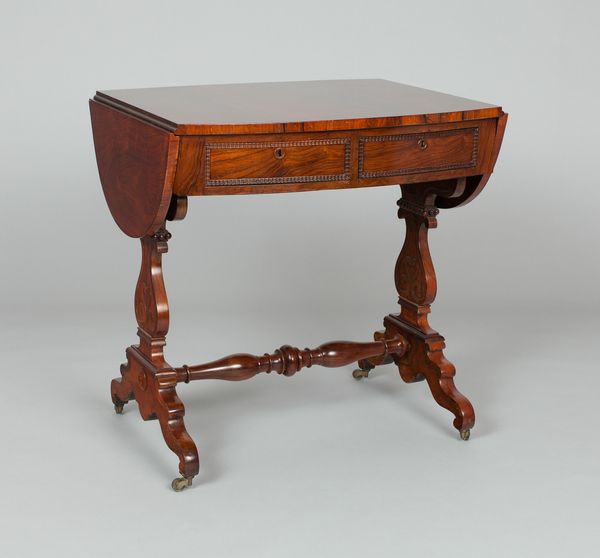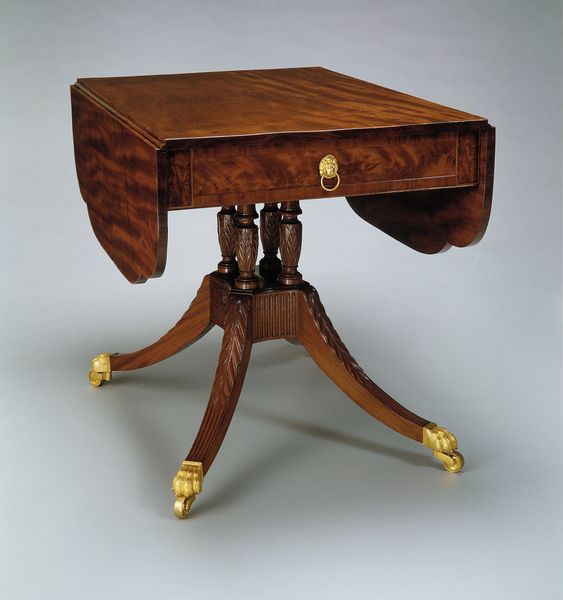
wood
#
table
#
medieval
#
furniture
#
wood
#
decorative-art
Dimensions: 66 × 110.5 × 91.4 cm (26 × 43 1/2 × 36 in.)
Copyright: Public Domain
Editor: Here we have a wooden table, made anonymously sometime between 1690 and 1730. I find the turned legs really charming. How would you interpret this piece? Curator: Well, on one level, it’s simply a table – a functional object. But consider what this table *represents* within the context of its time. Think about the act of furnishing a home during this period. Who had access to furniture like this? Who made it? This object speaks to hierarchies of power and labour. Editor: So you see it as more than just furniture? Curator: Absolutely. Look closer. The wood itself has stories embedded within it. What type of wood is it? Where did it come from? Was its harvesting and use equitable, or did it further marginalize certain communities through extraction and exploitation? Furthermore, consider the decorative elements, the specific style and what class and geographic region it might represent. What was life like for the people who owned it, used it, and maybe even took it for granted? Editor: It's strange to think about a simple table in that way. It shows a whole system of labour and power. Curator: Exactly. Now consider how an object like this might function as a marker of status, gender, or ethnic identity. What social roles did the presumed owners perform around this table? And in what ways might it also exclude others based on their social standing? Editor: I didn't think about any of that when I saw it, but it gives the piece a whole new meaning. I thought it was just a pretty antique. Curator: These pieces of furniture served many roles, aesthetic and practical. It's helpful to analyze the full picture with a broader lens. It asks us to consider questions about access, production, consumption, and the ways in which material culture can reinforce or challenge existing social norms.
Comments
No comments
Be the first to comment and join the conversation on the ultimate creative platform.
